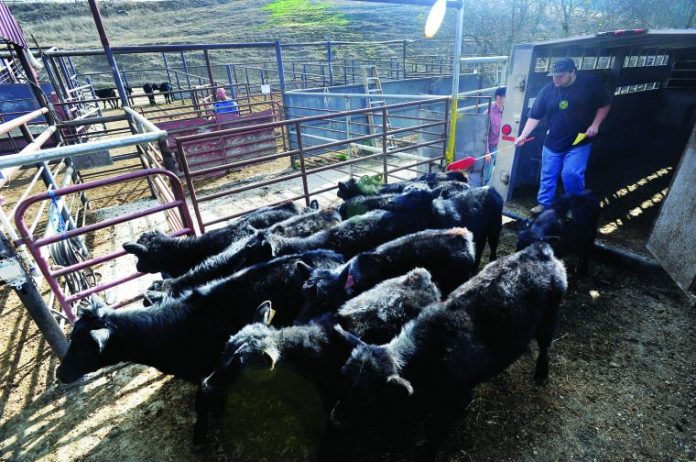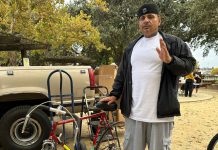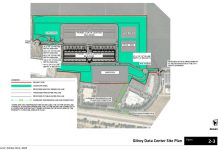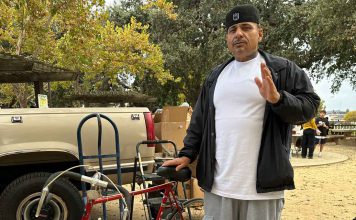
For cattle ranchers in San Benito County and the Central Valley, the recent drought takes the meaning of “thinning the herd” to a new level.
The owner of 101 Livestock Market auction house, Jim Warren, recently discussed the prolonged drought from his local business.
“We’ve never prepared for this,” Warren stressed.
Drought conditions have plagued California farmers and ranchers in the past three years, forcing farmers to cut harvests, uproot fields, and rely on groundwater and wells for water use. This year, the drought has spurred ranchers to sell most – and sometimes all – of their livestock in January instead of June or July as in a typical year.
Hollister, for instance, had its driest conditions on record in 2013, with just over 4 inches of rain falling the entire calendar year. Last month, Gov. Jerry Brown declared a drought emergency in the state and has asked residents to try to reduce water use by 20 percent. Last Friday, state officials announced that local agencies would not be receiving water from the State Water Project operated by the California Department of Water Resources due to the drought.
According to the National Drought Mitigation Center, Central Valley counties, including parts of Santa Clara, Santa Cruz, Monterey, Merced, Fresno and the entire county of San Benito, were recently reevaluated by the center as dealing with “exceptional drought” conditions, the most intense measure of drought severity, and the most severe in 14 years.
“Drought set the scale up,” Warren said, in his office at the 39-year-old facility in Aromas.
If there’s not enough rain soon?
“We’ll liquidate all the cattle on the Central Coast of California,” he said.
He said most of the cattle being sold are less valuable because they weigh an average of 300 pounds instead of 700 pounds the cattle would weigh in June or July.
“It’s been dry. This is a drought,” he said. “Nobody knows how long this will last.”
Monty Avery, an auctioneer at the market, said water supplies are shrinking.
“A lot of people are flat running out of water,” he said. “There’s ways to control that water if you got it, but it’s still pretty tough.”
Warren said a cow eats 30 pounds of food a day. Feed costs 15 cents per pound, which means it costs almost $5 a day to feed an individual cow.
For Warren, who cares for up to 4,000 cattle from ranchers, the costs are daunting.
“It makes more sense to sell the cattle instead of feeding them,” he said.
Indeed, for Gary Paddock, a cattle rancher out of Carmel Valley, the drought is forcing him to make tough cuts.
“I’m selling 85 percent of my cows,” he said.
There is some historical evidence of droughts in the valley dating to the 1800s, but nothing like this, he said. Berkeley scientists recently figured out that 2013 was the driest year on record since the 1840s and probably the driest since the days of Christopher Columbus more than 500 years ago, according to UC Berkeley’s News Center website.
“People around here … think it might rain,” he said. As a result, some cattle ranchers are holding back on selling their herds.
The auctioneers worry about the effect of selling off cattle to stores that sell supplies to ranchers, including businesses that sell identification tags for the cattle, seed stores and other suppliers.
“The trickle-down effect from the liquidation of the cowherds … could have a devastating effect on other business, especially in small towns,” Warren said.
He said because of the drought, grazing land has dried up and cattle ranchers have nowhere to send their animals for grazing.
“A lot of land that used to run cattle has dropped,” he said. “Those lands now produce staple and specialty crops.”
The folks who own those farms are usually older. When drought hits, they sell their farms, which does not help the economy, he said.
“I could see a lot of people not going back into business,” he said. “It would have a devastating effect on our economy.”
Because the cost of shipping in out-of-state feed is too expensive, ranchers are content to keep their cattle and feed them cheaper feed such as alfalfa or sell them to outside buyers such as Steve Griemsman, who came in from Worland, Wyo., to buy Paddock’s cows.
“They’re in a position of selling. We’re buying and taking them back home,” he said. “The longer you feed her (a cow), pretty soon the value of the cow gets eatten up.”
He said that if it started raining next week and brought up to 12 inches, the selling of livestock this early would probably stop.
“They haven’t had anything to eat,” he said. “They’re taking off.”
Warren said the market has enough drinking water to maintain the herds it does have with more than 40,000 gallons of water in reserves.
“We can’t really shut off the water on a cow,” he said. “As a business, we don’t have the luxury.”
He said cattle ranchers “have no choice” but to sell off their cows.
“You can’t feed yourself out of a drought,” he said.
Val Dolcini, state executive director of the U.S. Department of Agriculture Farm Service Agency, said he hopes the Farm Bill – which was passed by the House of Representatives last week and will be taken up by the Senate this week – will include drought-related assistance for ranchers and other emergency needs.
“We’re seeing livestock operations and dairies, for that matter, thin their herds down to maintain what they need in their (cows) genetic lines,” he said. “It makes sense to thin the herds.”
Last month, Rep. Sam Farr, D-Carmel, announced that Central Valley farmers could apply for drought assistance funds – money expected to be expanded in the Farm Bill, Dolcini said.
“We’re hoping to get some rain,” he said.












